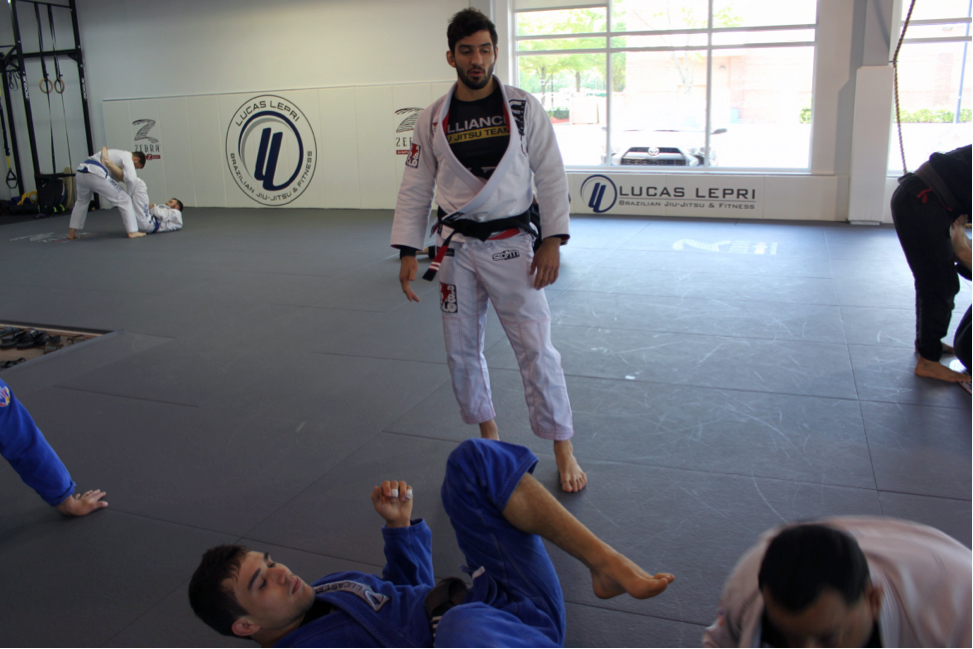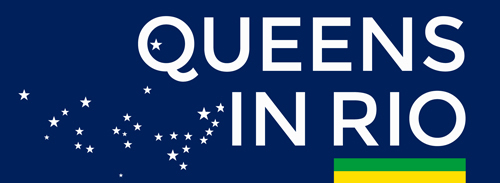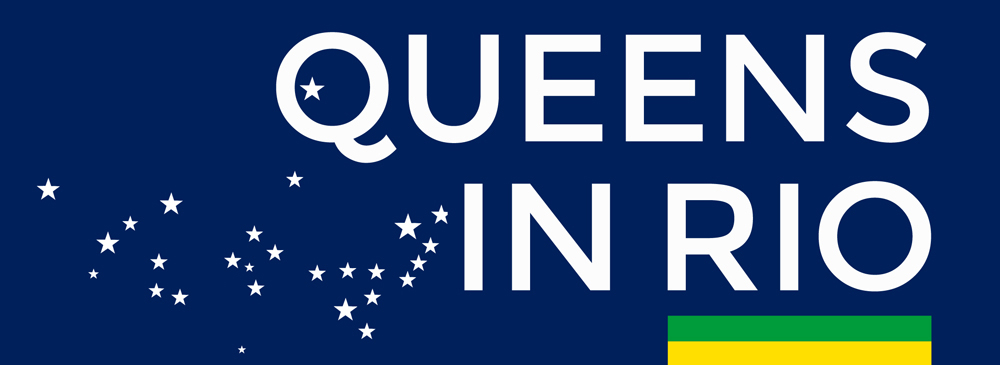Judo and taekwondo represent the martial arts in the Rio 2016 Olympic Games. Brazil is also the home of two lesser-known martial arts, Brazilian jiu-jitsu and capoeira. Brazilians have practiced these for centuries, and although they are not Olympic sports they are vital parts of Brazilian culture. Charlotte offers communities that practice both sports.
Lucas Lepri teaches Brazilian jiu-jitsu in a gymnasium on Sardis Road, and he says the sport is about forcing opponents into submission without beating them up. Jiu-jitsu is translated literally as “gentle art.” Practicing Brazilian jiu-jitsu develops self-defense techniques that can be used in street fights. Using various choke positions and holds, practitioners make their opponent submit. The sport enables smaller guys to beat bigger guys, Lepri says, because they can use leverage instead of pure strength.
Jiu-jitsu was born in Japan. It was developed as a tool for samurai warriors who needed another way of defending themselves if they lose their swords in battle. In 1904 the sport made its way to the United States, when champion Mitsuyo Maeda demonstrated the sport on the East Coast. Ten years later, the sport spread throughout the world, including Brazil, and Maeda, though born in Japan, became a citizen of Brazil.
Lepri began jiu-jitsu at the age of 16 in Brazil and never stopped. After he won the world championship in 2007, Lepri saw opportunities to teach and spread Brazilian culture in the United States, just as Maeda had done. “I rest on Sundays,” Lepri said. “When I’m training I feel at peace and very happy. If I don’t train I feel stressed. This is my therapy.” Before Lepri was introduced to jiu-jitsu he practiced another native Brazilian martial art, capoeira.
Capoeira is about “showing the guy you can hit him, but you don’t actually hit him.”
Capoeira is similar to jiu-jitsu, but capoeiristas do not make contact like jiu-jitsu fighters. Capoeira is a mix of martial arts and dance accompanied by music, singing, and chanting. Enslaved Africans used the dance forms of capoeira to disguise their training for combat. They later used the techniques developed in the martial art to fight against their slaveholders. When enslaved Africans were brought to Brazil, capoeira found a home.
A capoeirista must anticipate the opponent’s next move and counteract it with another motion. Lepri said Brazilian jiu-jitsu concentrates more on grappling, and capoeira is about “showing the guy you can hit him, but you don’t actually hit him.”
Despite a small contingent advocating for Brazilian jiu-jitsu to become an Olympic sport, Lepri said he believes it should be left out of the Olympic Games. Lepri explained that International Sports Federations sometimes change rules extensively for a sport to become part of the Olympics. Judo, he said, has changed considerably since it became an Olympic sport in 1964.
Both Brazilian jiu-jitsu and capoeira reflect a Brazilian style of life, Lepri said. Brazilians like to eat healthy and exercise, which are essential factors in practicing martial arts. While some of Lepri’s students apply his lessons in competitions, he hopes that each student will take away important life lessons: determination, respect, and most importantly, never giving up.

Lucas Lepri began jiu-jitsu at the age of 16 in Brazil and never stopped. After he won the world championship in 2007, Lepri saw opportunities to teach and spread Brazilian culture in the United States.

